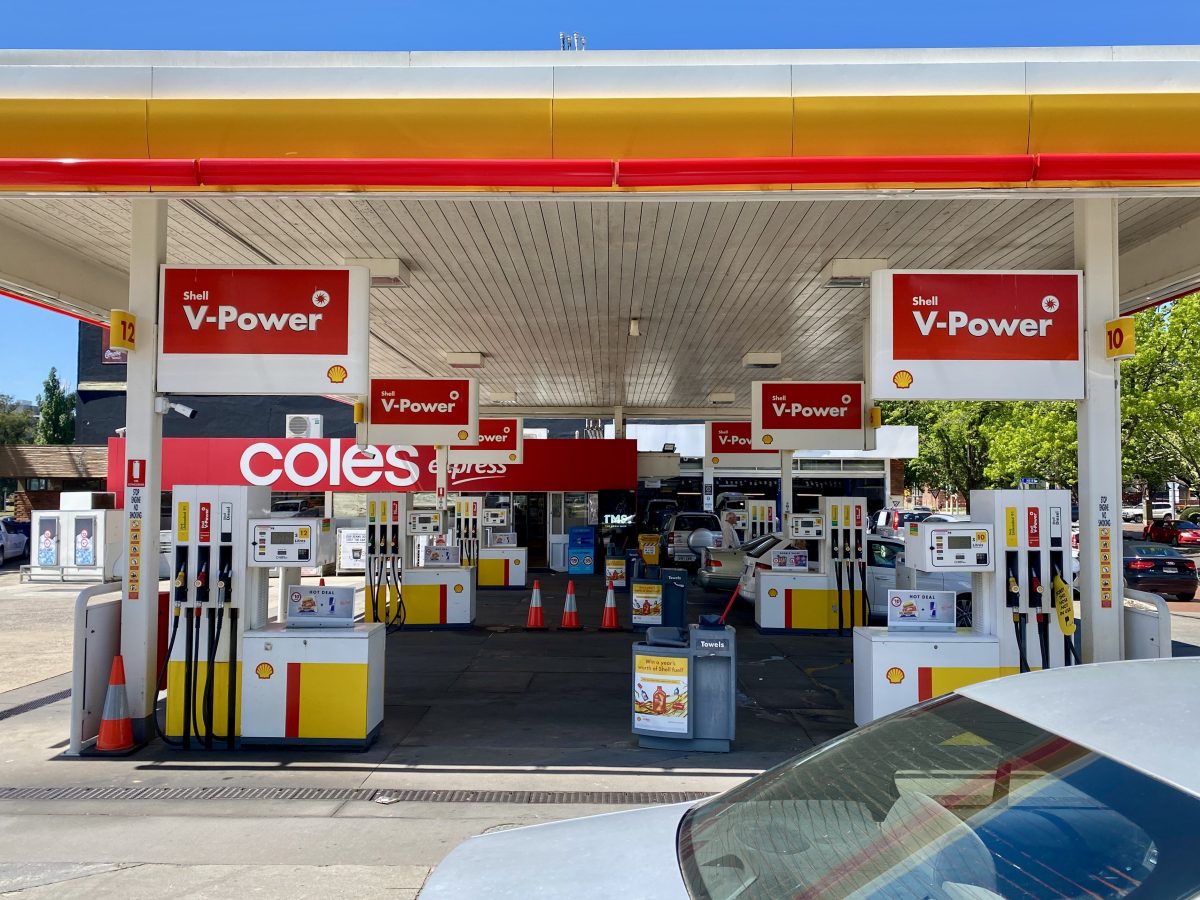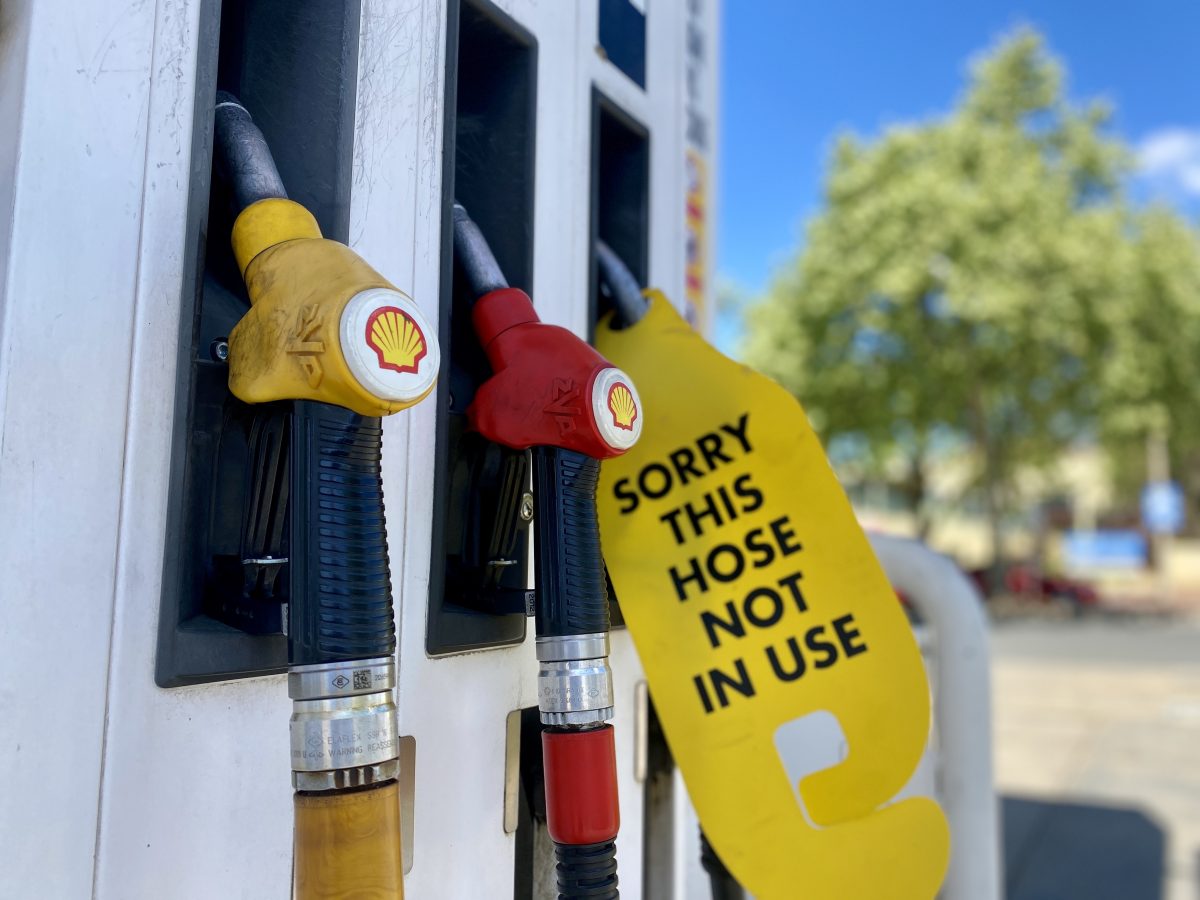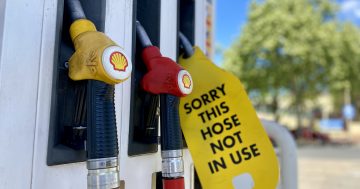
The average price for unleaded fuel in Canberra is $2.09. Photo: James Coleman.
If you’ve got the feeling a trip to the bowser is a bit more painful than usual, you’re not wrong. The question is, how long can we expect to feel the pinch, especially with war breaking out in the Middle East? A war, incidentally, that’s a stone’s throw from Iran and has the world’s oil traders reaching for the panic button.
So, what is going on with fuel prices? Are they due to drop soon, or is it going to get even more expensive?
According to PetrolSpy on Tuesday (10 October), the cheapest unleaded 91 in Canberra could be found in Fyshwick at $1.95 per litre, while the most expensive was in Curtin at $2.16. The average was $2.09.
To put that in perspective, on Budget night in March 2022, when the Federal Government agreed to give some reprieve by slashing the fuel excise by half for six months, Canberra’s average price for unleaded fuel sat at $2.08. That was the highest Canberra had ever seen. Until now.
Today’s situation is even worse for diesel drivers: a ‘low’ of $2.14 in Fyshwick and a high of $2.39 in Weston Creek.
The Australasian Convenience and Petroleum Marketers Association (ACAPMA) is the national peak body representing the interests of Australia’s fuel wholesale, distribution and retail industry. ACAPMA CEO Mark McKenzie says there’s mixed news.
Due to three factors, Canberra’s fuel prices have been rising slowly but surely since early July.
“First, we saw a fall in the Aussie dollar by about 5 cents a litre,” Mr McKenzie explains.
“Because oil is priced in US dollars, and we pay for it in Aussie dollars, if the Aussie dollar falls, we’re going to pay more for it.”

It typically takes two weeks for global oil prices to flow through to local pumps. Photo: James Coleman.
At the same time, global oil prices have been tracking upwards from US$72 a barrel on 1 July to as high as US$94 in mid-September. Because these prices can take up to two weeks to flow through to the pumps, we’re just over the pointy bit of that now.
“But the third and most important thing that’s happening is we’ve seen a fairly significant increase in the price of the finished product.”
Before COVID, the difference between crude and refined oil was 6 and 8 Australian cents per litre. But when governments around the world locked down their countries, oil demand dropped and the refineries mothballed many of their facilities. The difference then rose as high as 26 cents.
Only now, he says, are the refineries beginning to catch up with demand again.
“Economies have started to come out from COVID, but we’re still dealing with it in terms of industry ramping up. We haven’t had an increase in the production capacity, at the same time as we’ve had a number of economies replenishing their strategic reserves.”
At the bowser, this means the price of petrol has risen by 32 cents per litre since July and the price of diesel by 41 cents. You’ll feel that.

Prices were about to come down, but they’re now expected to remain the same. Photo: James Coleman.
In the past two weeks, refined oil prices finally dropped and we were about to feel the effects at the pump, only for Israel to be attacked over the weekend, raising questions about Iran’s involvement.
Mr McKenzie now expects prices to remain around the $2 mark for the foreseeable future.
“While prices were starting to come down on the global market, this crisis will probably mean they’ll stay up longer than they would have otherwise done,” he says.
However, if you were expecting a repeat of the Russia-Ukraine conflict, he says they’re not apples and apples.
“Russia contributes 10 per cent of global oil and petroleum exports, so when that [oil] was going to be sanctioned, that’s a significant amount to take out of the market. By comparison, if decisions are taken against Iran, it only produces one per cent,” Mr McKenzie explains.
“It’s understandable everyone’s anxious, but it’s not the same as the Russian scenario.”
Original Article published by James Coleman on Riotact.













